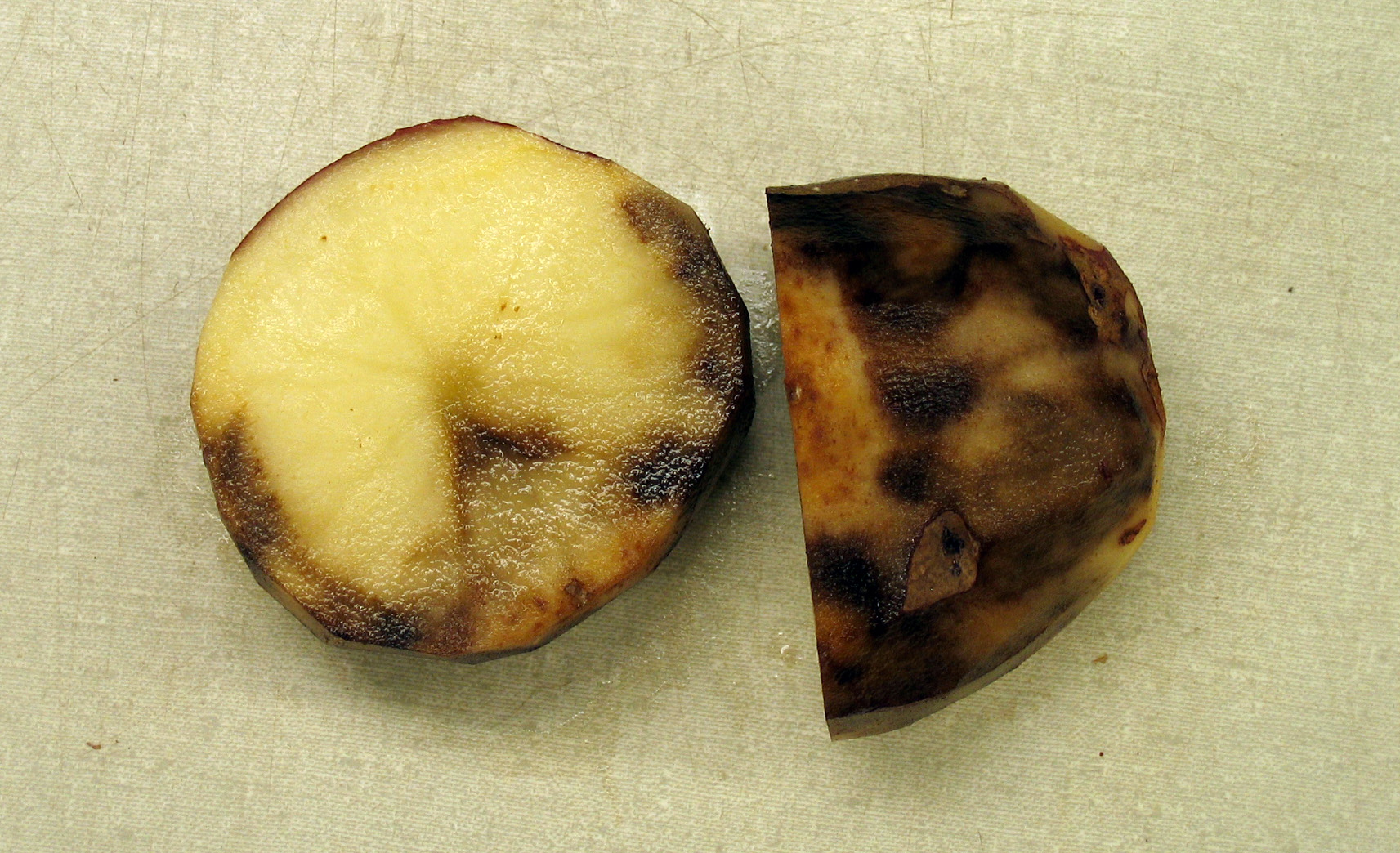 By George Munene
By George Munene
Late blight (phytopthora infestans) is the most economically important potato disease in Kenya causing yield losses ranging from 10 per cent to absolute crop failure. Studies report 92 per cent of Kenyan farmers having to deal with the disease.
According to the Kenya Potato Production Guide which was compiled by a team of scientists, late blight is a fungal disease that produces water-soaked lesions on the foliage that turns brown when dry and black when wet.
These spots can also occur on the tips of the stems, which turn black and die.
On the underside of the leaf, the fungus produces a white mouldy growth that is more clearly seen at the edges of the spots.
Related News: European companies capture Kenya’s potato seed sector impoverishing farmers
Related News: Researchers develop blight-resistant potato varieties for Kenya & Nigeria
Management
It spreads rapidly under cool humid weather through infected tubers and causes huge economic losses, particularly during the long rainy season.
As a preventive measure, susceptible potato varieties are sprayed with a fungicide when plants are 10 cm tall.
Resistant varieties like Kenya Mpya, Sherekea, Konjo, and Lenana should be sprayed when the first disease symptoms are noticed.
It is important to spray on the underside of the leaves.
Leaf symptoms of Late blight.
There is a strong relationship between the susceptibility of the crop to disease and a number of environmental and cultural factors.
The severity of many potato diseases often increases if the plants are also stressed by heat, insufficient amounts of nutrients or water, or other adverse environmental factors.
Good management of soil fertility and plant nutrition can help to suppress many diseases and minimize their effects on yield.
For example, appropriate applications of N, P, and K, based on analyses of soil and leaf tissue, will help suppress symptoms of potato early dying and early blight.
Related News: Partial Root-Zone Drying irrigation enables potato farmers halve water usage
Regular field inspections to monitor the growth and performance of the crop should be carried out.
Roguing, which involves uprooting and destroying diseased plants and host weeds, reduces the build-up of pathogens in the soil and the number of infected tubers and reduces the inoculum level in the field. It should be noted that uprooted plants should be destroyed and not be used for animal feed or composting.